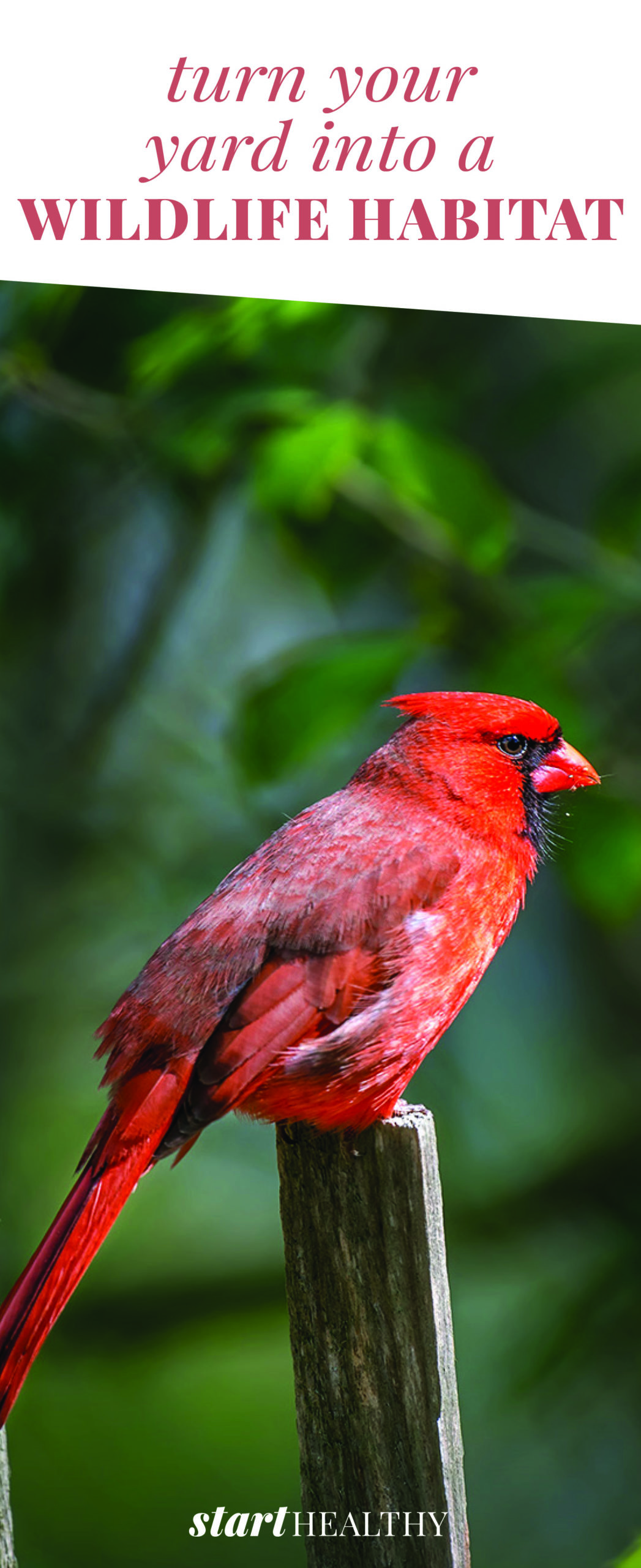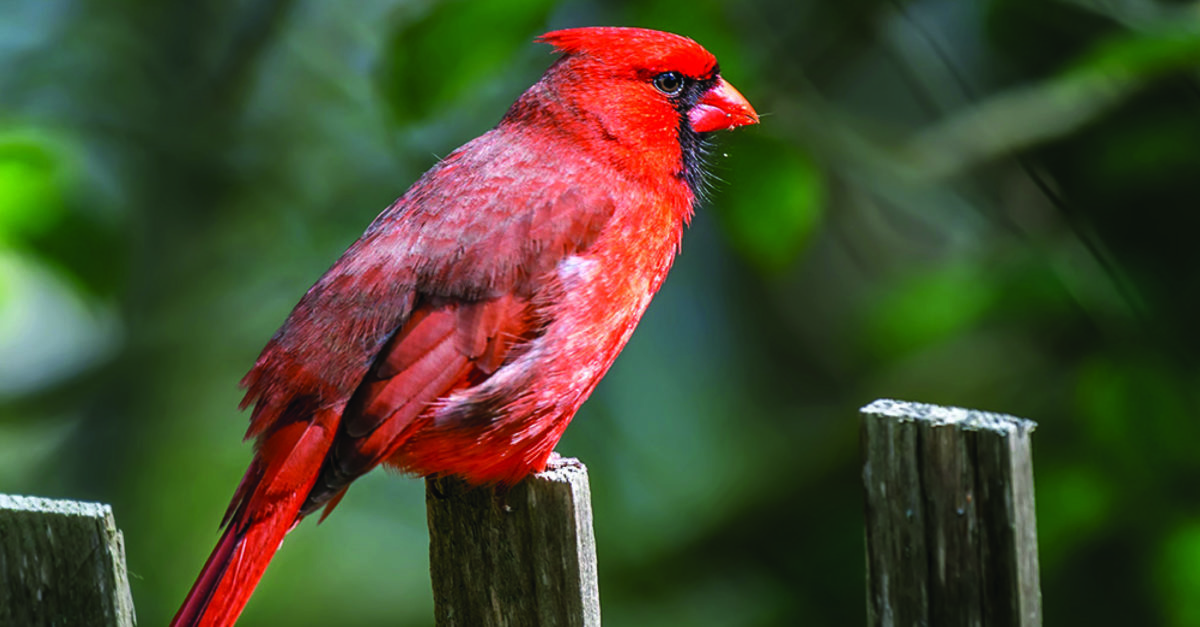Turn Your Yard into a Wildlife Habitat
Imagine having your outdoor space filled with beautiful blooms and plants, colorful butterflies, and the delightful melodies of pretty songbirds. If you convert some of your yard into a place where creatures can eat, live, and shelter, this scenario can be yours. If you’d like to create your own welcoming oasis, follow these tips.
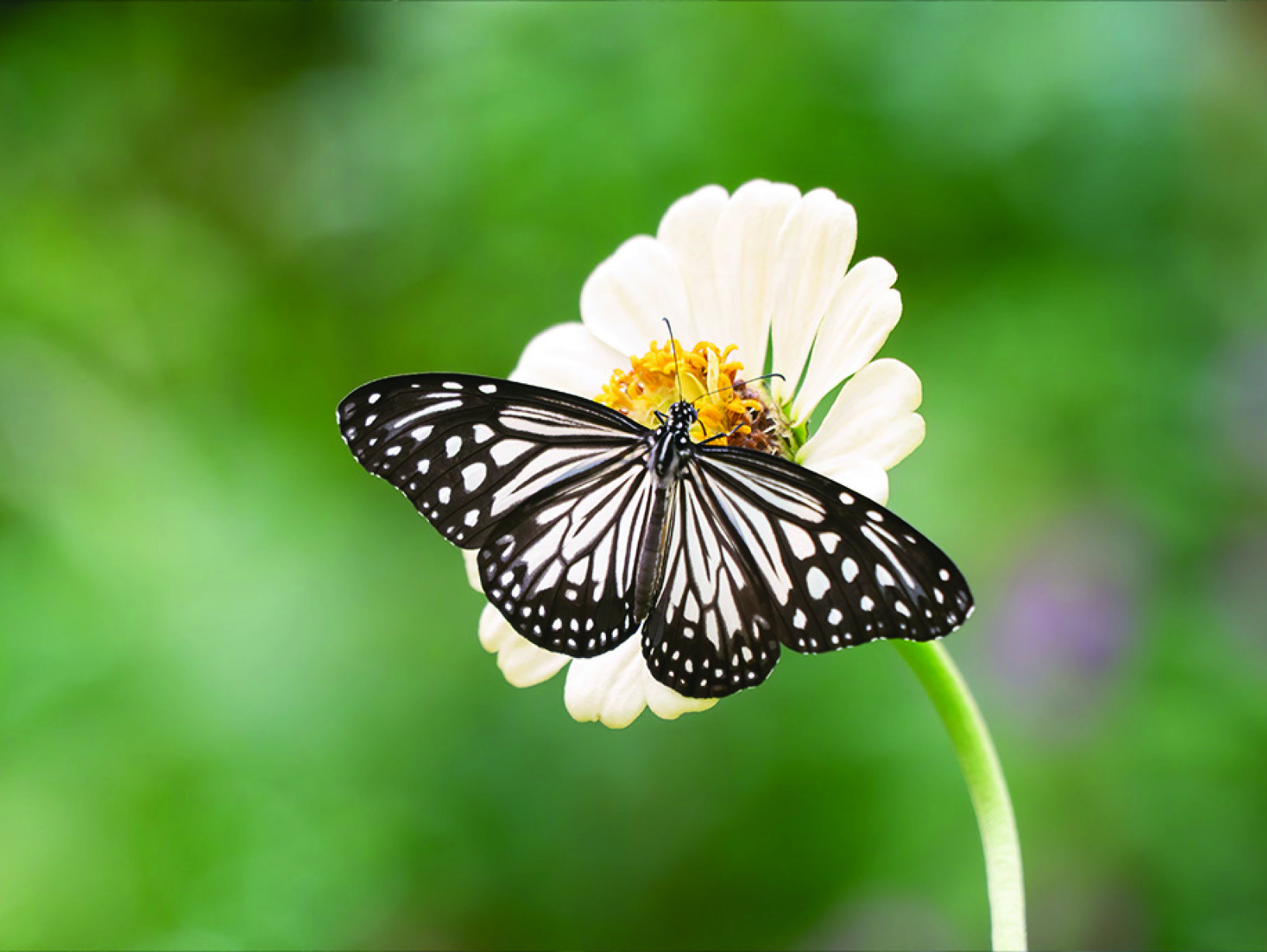
Create Your Own Oasis
You can do yourself and the planet a favor by creating a refuge for pollinators and other wildlife. Your yard can be a beautiful space in which you can relax, and it can also be a place where local and migratory wildlife like birds and butterflies will be supported and protected. Once your refuge is complete, you’ll be rewarded with the pleasure of tending it and watching the animals that visit.
Build a mini ecosystem
You can customize your space so it is welcoming to the types of wildlife you’d like in your yard. For instance, if you’d like to welcome hummingbirds, put out bright-colored feeders for them, and if want to see bluebirds and chickadees, attach birdhouses to trees or posts. You can also fill your yard with native flowering plants for hummingbirds and crabapple and dogwood trees for bluebirds, cardinals, and robins. A small pond with a fountain could welcome dragonflies, frogs, and turtles and provide water for birds and other animals. If you put out the proverbial welcome mat, though, keep in mind that you may welcome all local critters into your yard, not just the ones you have intended.
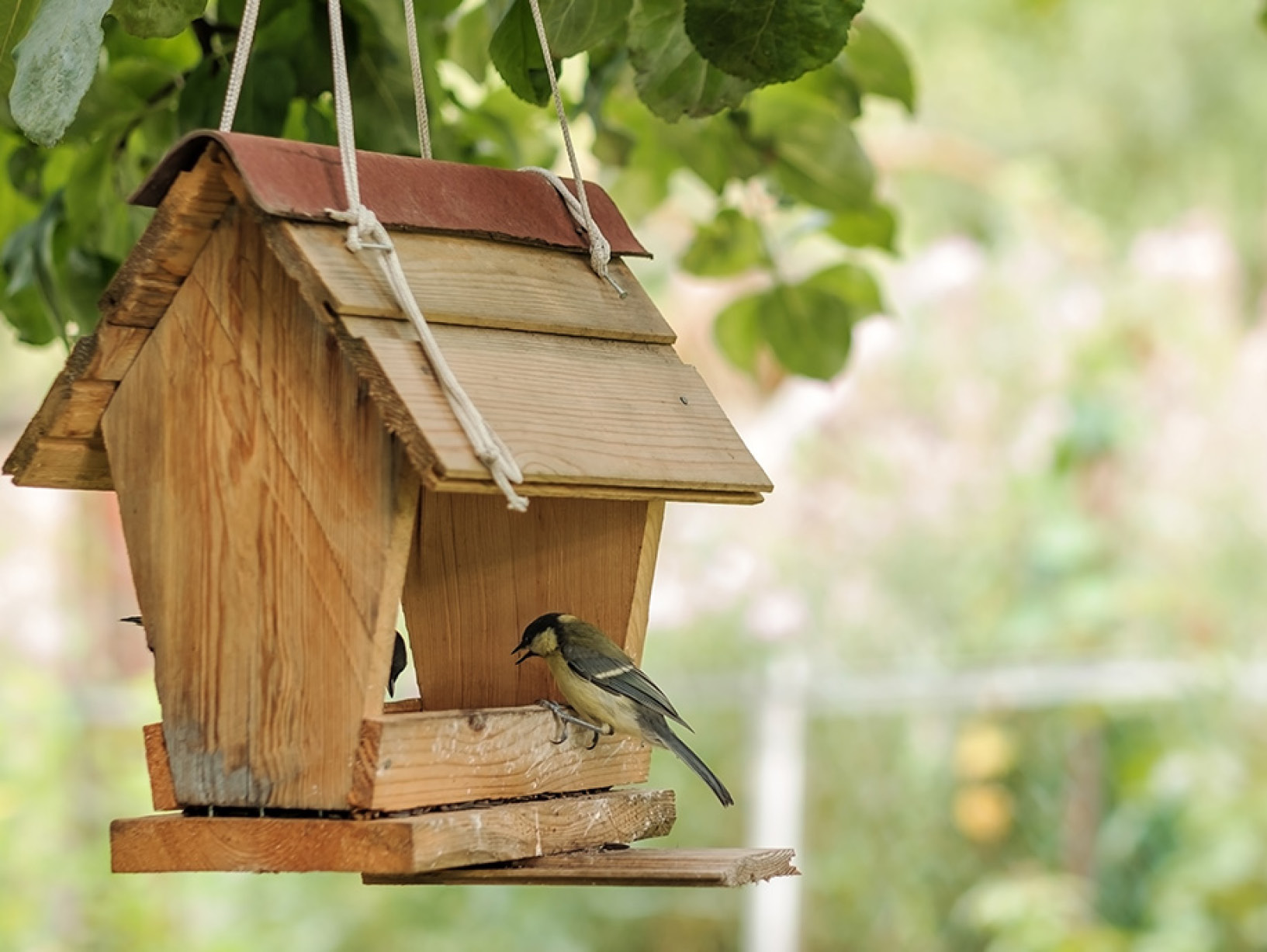
Create a safe place
If you can make your yard more welcoming to wildlife, they are more likely to visit. Keep your cat or dog out of the habitat by fencing it in, and naturally prevent bugs and mosquitoes by planting citronella grass, lavender, or rosemary. Only use natural fertilizers like compost in your space. You can help protect wildlife from predators by adding building a mini rock wall and planting a few trees and shrubs. Provide places for wildlife to rear their young, such as milkweed for monarch butterflies, or trees for nesting.
Provide food and water
You can feed wildlife by adding bird feeders to your yard or by growing native plants that can produce berries, nectar-producing flowers, seeds, and fruit. Aim to provide food year-round by planting plants, trees, and shrubs that bloom in the spring and summer for nectar and ones that grow berries in the winter. The Native Plant Finder tool on the National Wildlife Foundation (NWF) website can point you to plants that naturally grow in your area and can feed local wildlife. Wildlife will enjoy a birdbath, pond, or even a bowl of fresh water, but be sure to refresh it often and keep it clean. You can give small birds access to the water by placing stones or small twigs in it for them to stand on.
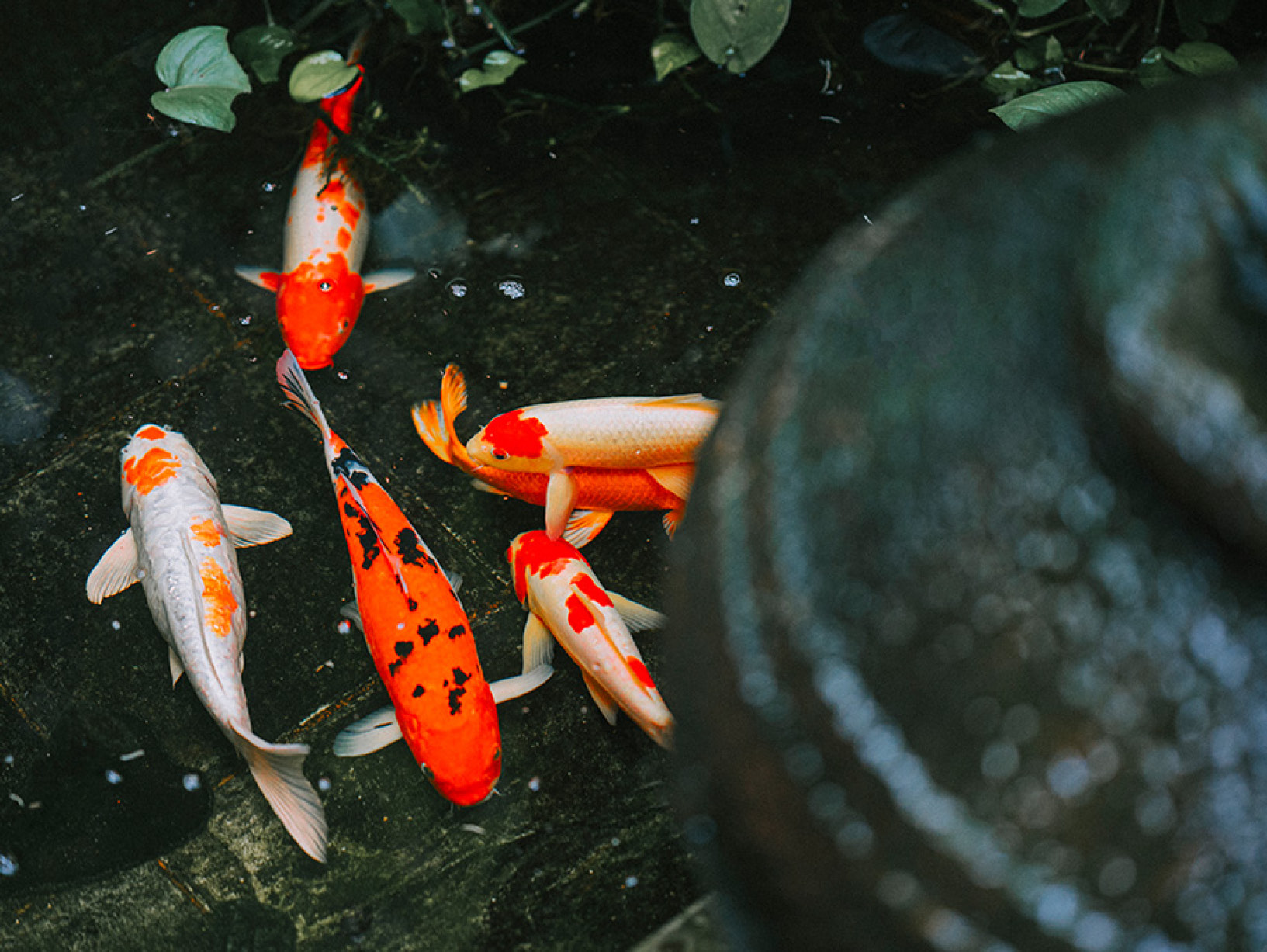
Make it official
Once you have your own wildlife refuge, you might want to get it recognized by the NWF as a Certified Wildlife Habitat. To qualify as a Certified Wildlife Habitat, your outdoor space will need:
- Three sources of food, such as berry-producing plants, nectar, and seeds in a bird feeder.
- A source of water, such as a birdbath or pond.
- At least two sources of shelter, such as a wooded area and dense shrubs.
- At least two places to raise young like a nesting box or pond.
You also need to use two to three sustainable practices in your yard or garden, such as mulching and limiting water use, planting less grass and using native plants, and fertilizing with compost and avoiding chemical fertilizers.
To your habitat certified, you just need to provide information about it on the NWF’s website and pay a small fee. Your donation will help support the organization’s programs to protect wildlife. Shortly after, you will receive a certificate showing that your yard is a Certified Wildlife Habitat, and, if you’d like, you can also share your accomplishment by purchasing a sign to display in your yard.
